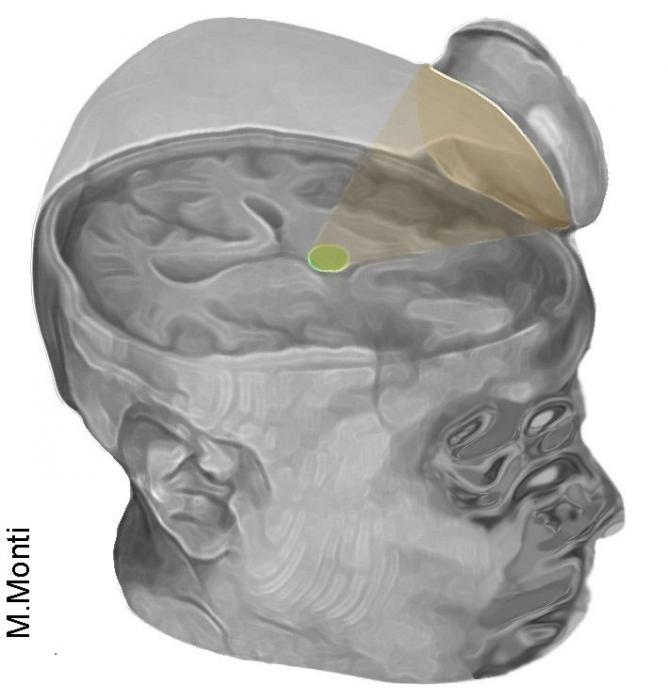 Starch, glucose, lactose, and many other carbohydrates have gotten a bad rep lately. Over the past decade, the popularity of low-carb diets has increased, and a lot of people have become fearful of bread, bananas, orange juice, and other carbohydrate-rich foods. Is this fearfulness warranted? Both yes and no…
Starch, glucose, lactose, and many other carbohydrates have gotten a bad rep lately. Over the past decade, the popularity of low-carb diets has increased, and a lot of people have become fearful of bread, bananas, orange juice, and other carbohydrate-rich foods. Is this fearfulness warranted? Both yes and no…
There’s nothing inherently wrong with carbohydrate; it’s just another nutrient, one that we all get through our diet. As I’ve pointed out many times here on the blog in the past, just looking at the macronutrient ratio of a diet doesn’t tell us that much about its healthfulness. Two diets with an identical macronutrient composition are not necessarily equally healthy; it all depends on what types of foods that are actually eaten. That said, we should obviously pay some attention to the macronutrient composition of the diet we’re eating. Although low-carb diets have experienced an upswing in popularity lately, I’d argue that the vast majority of people still take in too much carbohydrate.
Contemporary humans are consuming evolutionarily unprecedented amounts of carbohydrates
The fact that many contemporary humans consume excessive amounts of carbohydrates quickly becomes apparent when we consider what people are actually eating these days. It’s not just the folks who eat crap all day long – sugar-filled breakfast cereal in the morning, soda and pastries at work, convenience food for dinner, and white bread with some jelly on at night – that take in more carbohydrates than they ideally should, but also many of those who adhere to so-called prudent diets, rich in whole grains and fruits and vegetables. These people may have learned that cereal grains should form the foundation of their diet, and hence, they typically consume a lot of bread, pasta, and other grain-based foods. Combine that with a moderate intake of sugar and processed food, and the carbohydrate intake quickly reaches evolutionarily unprecedented levels.
In the ancestral environments in which our preagricultural ancestors evolved, carbohydrate-rich foods were not plentiful. Cereal grains, now a dominant part of the human diet worldwide, were rarely or never consumed in any significant quantities by Paleolithic humans, due to the fact that it takes a lot of time and effort to gather and process wild cereal grains. Honey, another carbohydrate-rich food that’s found in nature, is only seasonally available in certain parts of the world, and hence, probably didn’t make up a large portion of most Paleolithic diets.
Our ancient ancestors undoubtedly consumed carbohydrates in the form of fruits, nuts, and tubers and other vegetables, but since these foods have a very low carbohydrate density when compared with bread, pasta, doughnuts, and other foods that are high in sugar and/or grains, it would have been virtually impossible for our ancient ancestors to take in as much carbohydrate as the average Joe does today.
The unifying characteristics that bind all ancient human diets together
As all ancestral health enthusiasts know, there wasn’t just one Paleolithic diet. Our primal ancestors ate whatever they had access to in their immediate environment. Those who had carved out a niche for themselves in a part of the world where wild game was plentiful may have eaten a lot of animal foods, whereas those who lived in areas where it was difficult to get a hold of meat, ate mostly plants, and consequently, a diet that was higher in carbohydrate. The diets of ancient humans didn’t stay static thorughout the year, but rather changed with the seasons.
In other words. things were very different from how they are today. Our ancient forebears couldn’t go to a grocery store and choose what they wanted for dinner from a wide selection of produce; rather, they had to make do with what was available in nature. Sometimes they got a hold of meat for dinner; other times they had to make do with just plants; and yet other times they may have gone to bed with empty bellies.
This fact, that there wasn’t just one Paleolithic diet, but rather many different ancient humans diets, is often used as an argument to debunk the Paleo diet. Usually, this argument is used by people who haven’t read up on Paleolithic diets and lack an understanding of human nutrition. What these individuals fail to recognize is that the fact that there wasn’t just one specific diet that supported the evolution of the complex human brain and body doesn’t mean that the Paleo diet concept is faulty.
There are several unifying nutritional characteristics that bind all ancient humans diets together. When compared to contemporary western diets, Paleoliothic diets were higher in protein, omega-3, and fiber and lower in omega-3, starch, sugar, saturated fat, and trans-fats.
Our ancient ancestors likely derived no more than – at the most – 40% of their calories from carbohydrate. This is something that can be inferred from looking at the design of preagricultural human diets. When compared to bread, pasta, chocolate, and other grain- and/or sugar-rich foods, wild fruits and vegetables have a very low carbohydrate density. It would have been virtually impossible for our preagricultural ancestors to derive more than 40% of their calories from carbohydrate, unless they had access to large amounts of honey and/or ate significant amounts of cooked tubers. This statement is further supported by ethnographic data showing that modern-day hunter-gatherers typically derive about 20-40% of their energy from carbohydrate (1).
Some non-westernized people, such as the Okinawans in Japan and the Kitavans on the Island of Kitava, have seemingly maintained good health “despite” eating a lot of carbohydrates. What we have to remember though is that these cultures are the exceptions rather than the norm. Their diets are not a good representation of the type of diet that conditioned the human genome over millions of years of evolution. Moreover, these traditional people don’t eat pizza, chocolate, and all of the other processed, cabrohydrate-rich foods that make up a large part of the Western pattern diet. The Kitavans, for example, derive their carbohydrates exclusively from bananas, yams, and other “ancestral foods”.
Finally, we have to remember that correlation doesn’t imply causation. Just because chronic diseases such as colon cancer and type-2 diabetes are rare among some non-industrial groups who eat carbohydrate-heavy diets doesn’t mean that we should all be eating a lot of carbohydrates. We can’t exclude the possibility that the low rates of chronic diseases within these populations are not primarily due to a healthy diet, but rather due to some other factor. Moreover, it could be that they would have been even healthier if they replaced some of the carbohydrates they are eating with protein and fat.
When we deviate from the evolutionary norm, bad things tend to happen
Government-issued dietary guidelines dictate that we should derive about 45-60% of our total calories from carbohydrate. The main problem with these guidelines is that they lack an evolutionary basis. We humans didn’t evolve to eat a diet that’s extremely high in carbohydrate; rather, we probably do best on a diet that contains a balanced proportion of the different macronutrients.
Every time we deviate from the evolutionary template, bad things tend to happen. It’s just basic evolutionary biology, really. When we adopt a diet that is significantly different from the type of diet that nourished our preagricultural ancestors and contributed to shaping the human genome over millions of years, unpleasant things happen: Our microbiomes and gene expression profiles change, we become inflamed and fatigued, and we lose our sex drive.
The notion that excessive carbohydrate intakes is the sole cause of the obesity epidemic has no support in the scientific literature. Several causal factors underlie conditions such as obesity and type-2 diabetes. That said, a high intake of carbohydrates, in particular refined carbohydrates, can undoubtedly cause fat accumulation. There’s no doubt in my mind that the massive intake of refined grains and sugar in both developed and developing nations has helped fuel the current epidemic of obesity and type-2 diabates. There has been scant evolutionary time for the human body to fully adapt to a high-carbohydrate diet, which helps explain why the incidence of type-2 diabetes, obesity, and many other conditions associated with impaired glucose and insulin homeostasis has increased lately.
Our ability to store fat following the consumption of large amounts of carbohydrate-heavy foods is undoubtedly an evolutionarily conserved mechanism. This mechanism would have benefitted our preagricultural ancestors, who lived in an environment in which carbohydrate-rich foods were hard to come by; however, in the modern world, where food products high in grains and sugar are available on every street corner, these ancient adaptations work against us. When there’s a constant influx of sugar into the system, there’s no reason for the body to tap into its stored energy reserves; rather, it burns glucose and stays in fat-storing mode.
As I’ve pointed out here on the blog before, I don’t think eating smaller amounts of whole grains such as oats, brown rice, and/or buckwheat every now and then is problematic. Actually, I think a lot of people will benefit from including some of these starchy and fibrous foods in their diet, at least if they are very physically active. That said, eating a lot of grains is not a good idea, especially for those who are physically inactive.
Today, most people in industrialized countries spend the majority of their wakeful hours sitting on a chair; they don’t move much. Moreover, more than half of the population in nations such as the U.S. is overweight, and a lot of people are diabetic. These individuals obviously shouldn’t bombard their system with carbohydrates all day long. Unfortunately, that’s what many of them do; they eat bread, breakfast cereals, and processed foods, all of which induce a surge in the levels of glucose and insulin in the blood.
A large body of evidence indicates that these people would be better off replacing some of the starch and sugars they are eating with protein, healthy fats, and fiber (2, 3, 4, 5, 6). In other words, their health would greatly improve if they adopted a diet with nutritional characteristics similar to that of the original human diet.
Key takeaways
The diets that conditioned the human genome over millions of years of evolution were low in carbohydrates when compared to modern grain-based diets. The evolutionary template predicts that the consumption of a diet that is substantially different from the type of diet that conditioned the human genome over millions of years of evolution leads to suboptimal gene expression and ill-health.
The human body is ill-equipped to handle the surge in blood glucoe and insulin that accompanies the consumption of large amounts of grains and processed foods. Moreover, carbohydrate-rich foods such as wheat bread, pasta, and sugar-filled convenience foods contain several other problematic ingredients (e.g., antinutrients, salt, gluten) that may induce adverse physiologic effects upon consumption.
I have nothing against carbohydrates per se. If you derive most of your carbohydrates from whole foods such as sweet potatoes, apples, and oats, a fairly high carbohydrate intake isn’t necessarily problematic. That said, you would probably be better off if you replaced some of the carbohydrate-rich foods you’re eating – in particular those that contain refined grains and/or a lot of simple sugars – with foods rich in protein, healthy fats, and/or fiber.



